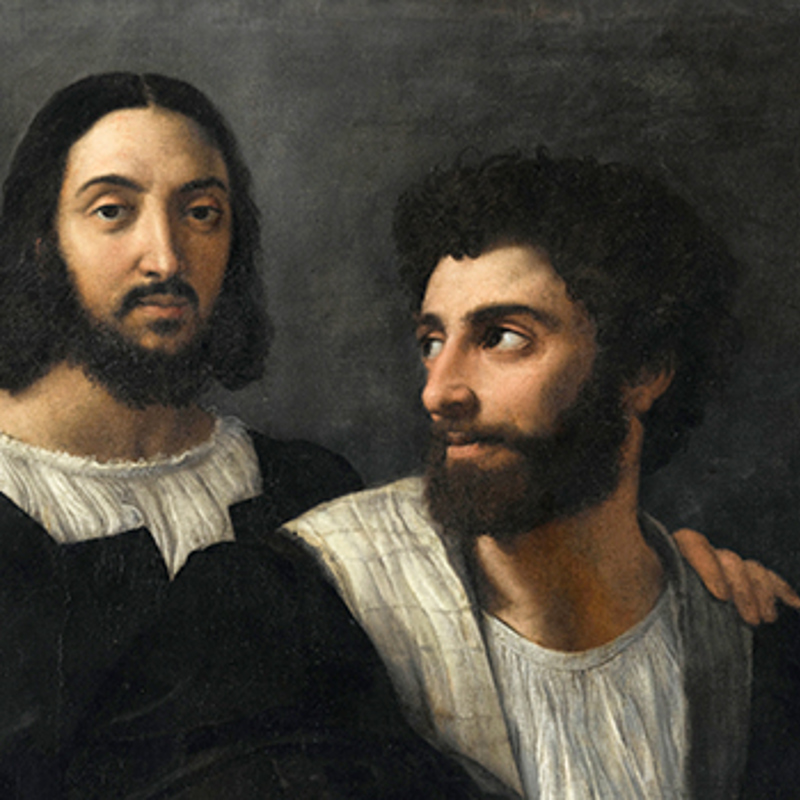The annual Linbury Lecture invites world-renowned speakers working in museums, galleries or academic art history to deliver illustrated lectures exploring themes relating to the National Gallery’s history and collections.
Coinciding with The Credit Suisse Exhibition: Raphael, we welcomed Patricia Rubin, Emeritus Professor of Renaissance Art at the Institute of Fine Arts in New York, to deliver her lecture, ‘Happy beyond the common dream’: the uncommon celebrity of Raphael’s ‘Madonna della Seggiola’.
She was joined, following the lecture, in conversation by Matthias Wivel, the Aud Jebsen Curator of 16th-Century Italian Paintings at the National Gallery. The lecture took place on 24 June 2022.
Abstract
Writing to his American readers in 1874 about his visit to the Palazzo Pitti, Henry James rhapsodised about Raphael’s ‘easy, various, bountiful genius… happy beyond the common dream in his beautiful ‘Madonna of the Chair’.’ He goes onto say that ‘the general instinct of posterity’ seemed to have been to treat the picture as ‘semi-sacred, an almost miraculous, manifestation.’
James had already made the painting the protagonist of a short story, 'The Madonna of the Future' (1873) with justified confidence in its cult status. The most copied and among the most famous of Raphael’s works, the tondo can be seen as a portal through time, offering the chance to consider how his art was viewed and valued from the 16th century onwards. It provides a case study in changing terms of appreciation and forms of attention.
Nothing is known of the painting’s origins, intended owner or first placement beyond the reasonable assumption that it was painted in Rome around 1513. In that way it is as mysterious as it is miraculous, obscure as it is famous. First documented in the Medici collections in 1589, by the beginning of the 19th century the picture had literally become legendary. Glossing the composition’s distinctive elements not only gives insight into Raphael’s pictorial vocabulary, but also reveals the many ways that it was understood.
Patricia Rubin
Patricia Rubin is Emeritus Professor of Renaissance Art at the Institute of Fine Arts in New York. She has served as Director of that Institute, Deputy Director of the Courtauld Institute of Art, founding Head of the Courtauld Institute Research Forum, and Acting Director of Villa I Tatti in Florence. She has written books on Giorgio Vasari’s 'Lives of the Artists' and on art and society in Renaissance Florence ('Giorgio Vasari: Art and History' and 'Images and Identity in Fifteenth-century Florence'), along with numerous essays and articles on related topics, including the co-authorship of the National Gallery exhibition catalogue 'Renaissance Florence: The Art of the 1470s'.
Her research interests range from altarpiece design to humbug and art history in the 19th century. She has recently written essays on Sandro Botticelli’s illustrations to Dante’s 'Divine Comedy', Anglo-American viewing of Leonardo da Vinci’s 'Last Supper', tomb sculptures by Michelangelo Buonarroti and Andrea del Verrocchio (‘Michelangelo’s Monkey and the Melancholy of Death’), ‘Perverse Images: Monstrous Beauty and Monkey Business in Italian Art from Botticelli to Bronzino,’ and ‘Dangerous Liaisons: Compromising Positions and Provocative Allusions in Bronzino's 'Martyrdom of Saint Lawrence'.’
Image above: Detail from Raphael, 'The Ansidei Madonna', 1505, the National Gallery, London
Supported by








